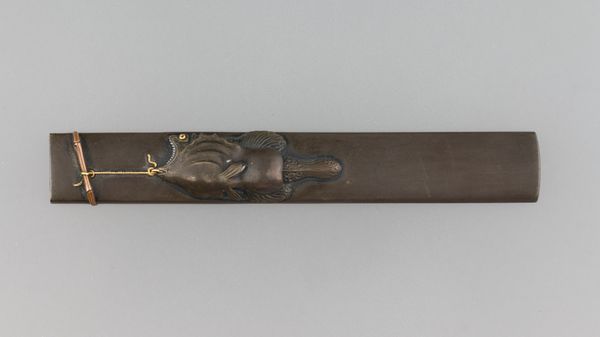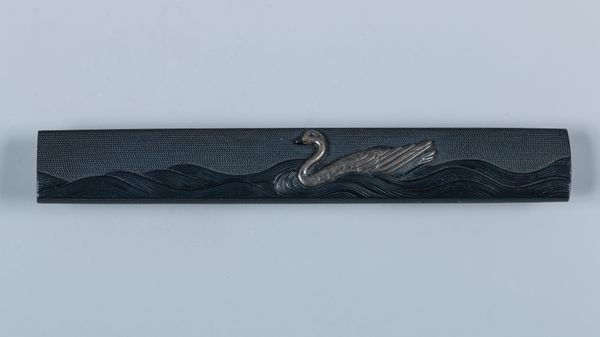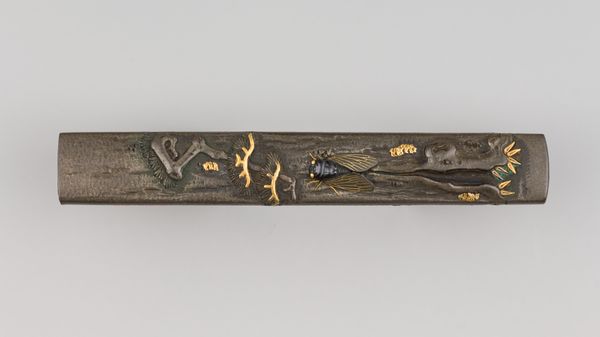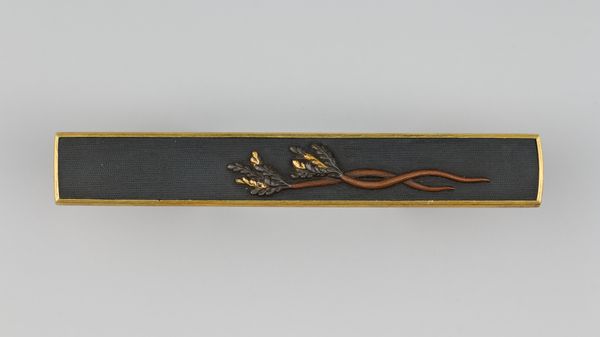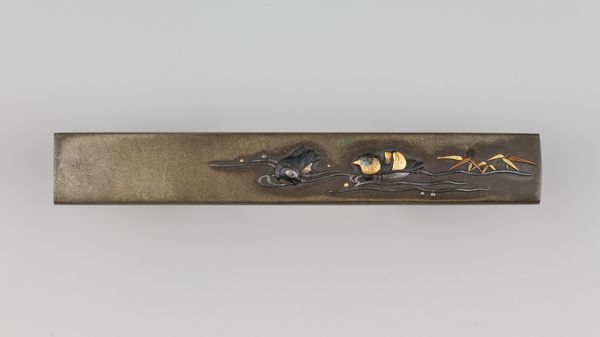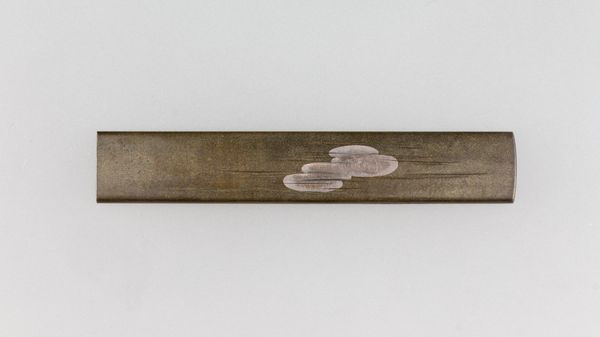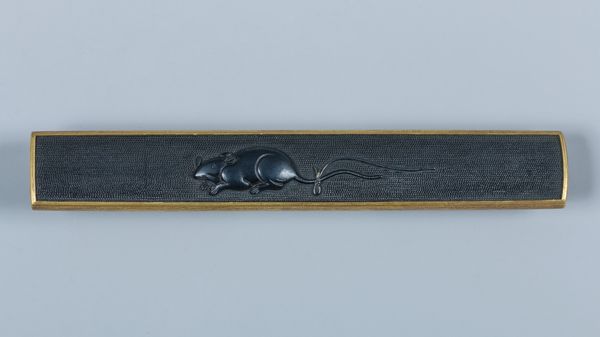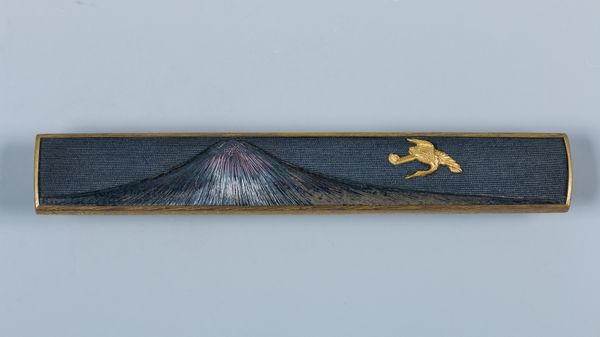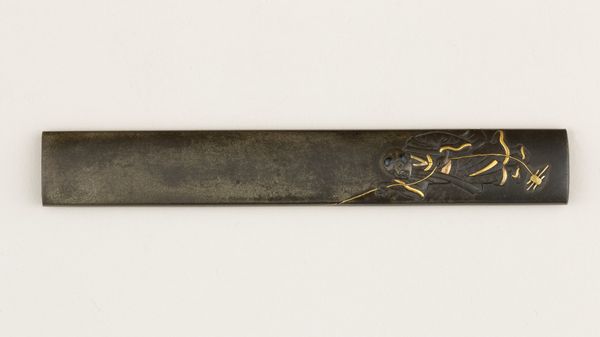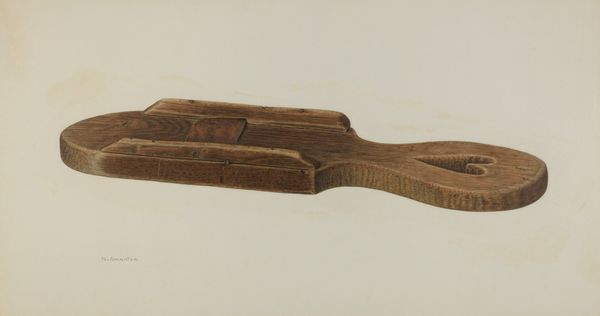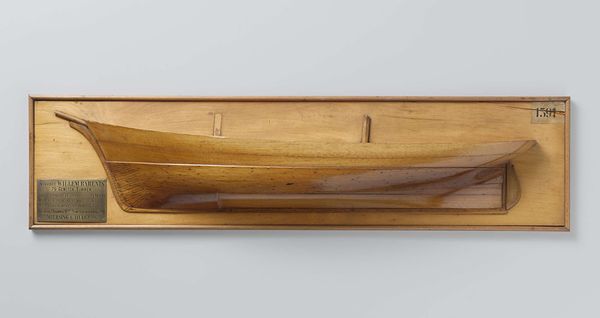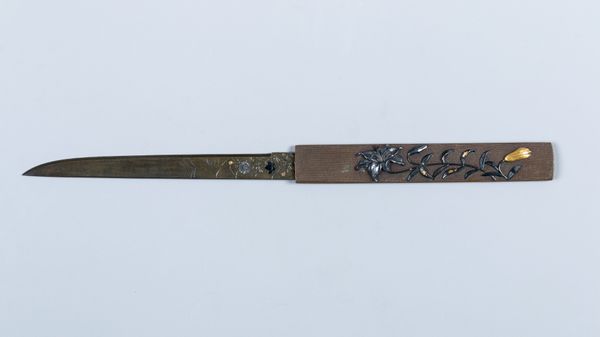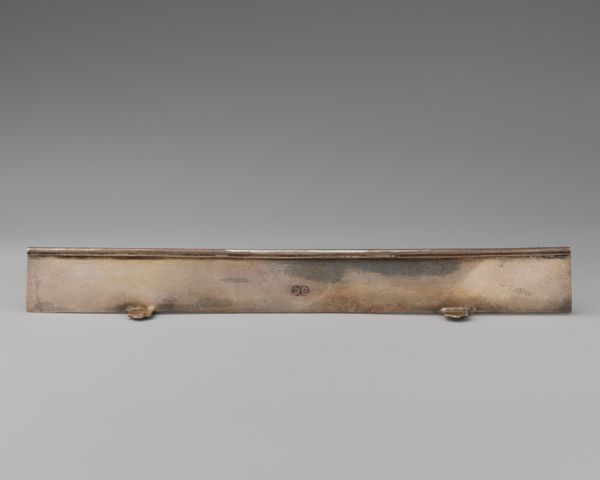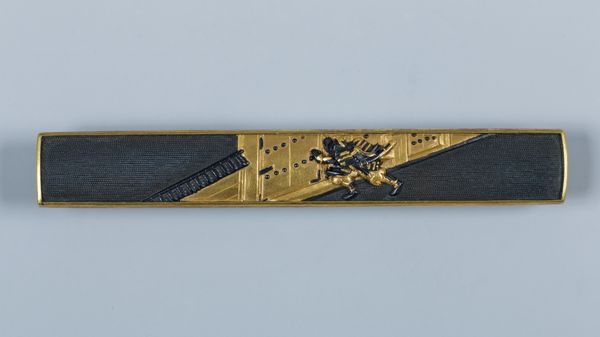
carving, metal, relief, bronze, sculpture, wood
#
carving
#
metal
#
sculpture
#
asian-art
#
relief
#
bronze
#
japan
#
sculpture
#
wood
#
sword
Dimensions: L. 3 13/16 in. (9.7 cm); W. 9/16 in. (1.4 cm)
Copyright: Public Domain
This kozuka, or knife handle, was crafted by Gotō Teijō in 17th-century Japan. The intricate design features an arrow piercing through what appears to be a knotted rope, rich in symbolic weight. The arrow, a symbol of direction and penetration, meets the knot, a motif heavy with meanings of bond, union, and entanglement. Consider the Gordian Knot, severed by Alexander, promising liberation through decisive action. Yet, in other contexts, knots signify unbreakable ties, binding agreements, or even magical spells. Here, the arrow's forceful entry transforms the knot's symbolism. This union of arrow and knot resonates across cultures and eras. From Cupid's arrow binding hearts in love, to the herculean knot worn in ancient Rome as an amulet, these motifs resurface, evolving with each telling. This handle becomes a fascinating relic, speaking to our shared psychological landscape, and the continuous, cyclical progression of symbols throughout history.
Comments
No comments
Be the first to comment and join the conversation on the ultimate creative platform.
